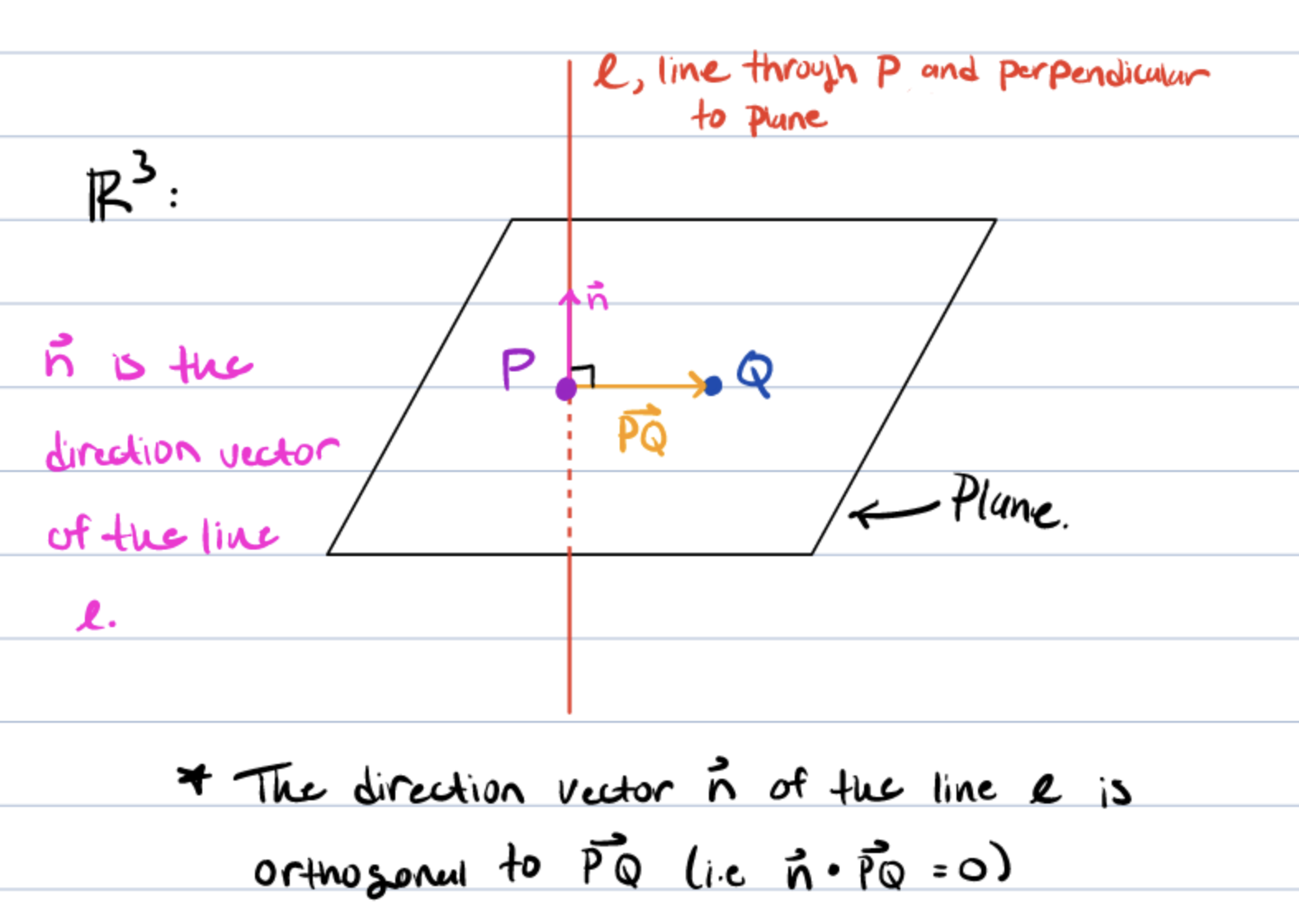-
We have a plane in .
-
Take a point on this plane.
-
There is a unique line passing through this point.
- This line is (by definition) perpendicular to the surface of the plane.
- We call this the normal vector .
-
Now take any arbitrary point on the plane: .
-
For to lie on the plane it must satisfy the following:
- , the vector between and , must be perpendicular to , the normal vector.
-
Since is perpendicular to the surface of the plane, it is perpendicular to every vector lying on the plane.
-
If any point fails the perpendicularity property, it does not lie on the plane.

- Any two normal vectors of a plane are parallel ⇒ they are unique except for a nonzero scalar multiple.
Expansion of the Equation
Why Scalar Equation
- Easier to check if point is on the plane with this equation.
- Easier to tell the normal vector of a plane (similar to how we can easily tell the direction vector of a line).
- Two lines are parallel if their direction vectors are parallel.
- Two planes are parallel if their normal vectors are parallel.